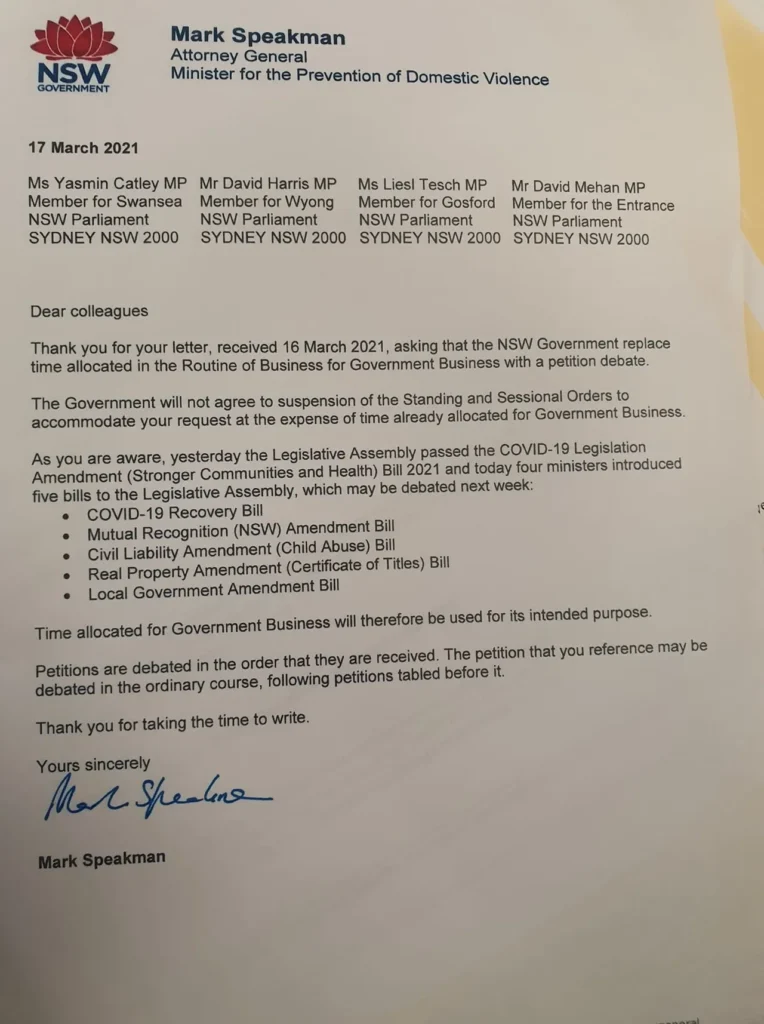
The sacking of Wyong and Gosford Councils to make way for the mega Central Coast Council has been a failure but settling for less elected representation will not make it better.
By Jackie Pearson
The current Central Coast Council administrator’s legacy will be an opportunity to vote in a referendum this September on whether to reduce the number of elected Central Coast Councillors from 15 to nine and to reduce the number of wards from five to three or get rid of wards altogether. Mr Persson has ruled out giving the people an opportunity to vote on de-amalgamating Central Coast Council and moving back to two councils. Will less elected representation really result in better governance at Central Coast Council?
Local government has an important role in our lives. It provides the amenities and services we rely on at a community level and has responsibility for providing services for land and properties in our district.
Local government is not mentioned in the Australian Constitution. A 2011 research paper produced by the Commonwealth of Australia’s Parliamentary Library remarks: “What all local councils in Australia have in common is that they are the creatures of state/territory legislation, which stipulates the activities which the state or territory requires the local government to perform, as well as the functions it is allowed to perform if it chooses. In practice, local councils have a great deal of autonomy, but they can be dissolved, suspended or amalgamated with other councils if their state/territory government regards such measures as appropriate. The state/territory government may also override council decisions.”
The NSW Local Government Act 1993 “provides a legal framework for an effective, efficient, environmentally responsible and open system of local government in NSW…to encourage and assist the effective participation of local communities in the affairs of the local community…to give councils the ability…to carry out activities, appropriate to the current and future needs of local communities and of the wider public the responsibility for administering some regulatory systems.”
The “fit for the future” reform process that resulted in the 2016 sacking of Gosford and Wyong Councils and the creation of the Central Coast Council was supposed to result in improved efficiencies, more funding opportunities and better governance for the people of the Central Coast. It has not delivered.
How our Council works
The Central Coast Council has two parts – the operational part or the bureaucracy and the elected part or the Councillors (currently under suspension and replaced by a single administrator acting in the role). The elected council has very little power when compared to the power held by the bureaucracy. The bigger the council the bigger the bureaucracy and the less likely the councillors would be able to hold the operational side to public account.
This is the messy guts of what went wrong at Central Coast Council in recent years. The bureaucracy was too big for the elected councillors to hold to public account. Elements of dysfunction within the elected council made it even more difficult to do so. The current administrator makes regular reference to the “majority group” being responsible for that dysfunction but that’s a convenient simplification of what went wrong.
A careful examination of youtube recordings of council meetings since the amalgamation shows stunning and reprehensible behaviour by certain councillors who clearly believed they had a mandate to behave like human wrecking balls. There was no cohesive majority group. Too much time was spent debating rescission motions. Decisions made under the initial administration period from May 2016 to September 2017 made it difficult for the elected arm of council to move forward with its agenda.
The bureaucracy had, and still has, the upper hand. Central Coast Council is a mega business with a massive budget, investments and property to manage. The 15 elected councillors, most of them holding the role for the first time, found it very difficult to provide a level of scrutiny and governance required for such a big organisation.
Voting to disempower the community
The current administrator’s legacy will be an opportunity to vote in a referendum this September on whether to reduce the number of elected Central Coast Councillors from 15 to nine and to reduce the number of wards from five to three or get rid of wards altogether. Mr Persson has ruled out giving the people an opportunity to vote on de-amalgamating Central Coast Council and moving back to two councils. Will less elected representation really result in better governance at Central Coast Council?
Mr Persson’s reports lay the blame for the Central Coast Council’s financial failures at the feet of the former Chief Executive Officer and Chief Financial Officer. The Point is currently examining documents pro-actively released by Mr Persson regarding CEO/CFO knowledge of the unlawful spending of Council funds and will report our conclusions shortly. Meanwhile, Mr Persson has stated categorically that the elected councillors were not to blame for the illegal expenditure of internally and externally restricted funds.
He has repeatedly said councillors were responsible for the deficit blow out. That assessment glosses over the fact that budgets are prepared by the bureaucracy and presented to the councillors. In the instance of that presentation at Central Coast Council, the councillors were led to believe there was more money in the kitty than there actually was. The bureaucracy told the elected councillors they had more money to spend than they had.
Fifteen councillors, an audit and risk committee, an internal auditor and the NSW Audit Office did not detect the “anomaly” (a forensic investigation has ruled out corruption) that resulted in the unlawful spending of restricted funds. If 15 councillors didn’t detect it, how could nine?
Nine councillors wouldn’t have a snowball’s chance of delivering good governance for a Central Coast population edging towards 400,000 in the next decade. With or without wards the job would simply be too big.
The way ahead
A poll was conducted recently to measure community support for the referendum. Results haven’t been made public yet but Mr Persson let it be known at the 9 March council meeting that retention of the status quo (15 councillors and five wards) was not a popular choice.
The Central Coast Greens have stated they will move ahead with their own campaign to give the community the opportunity to vote on a de-amalgamation.
The referendum on councillor numbers will go ahead in September which is when we should be voting for the next crop of 15 councillors, if the Local Government Minister decides to take Central Coast Council out of administration before then.
A vote for less councillors will not fix this region’s local government problems. It has the potential to make them worse. Nine councillors will not be able to keep up with public inquiries, see through any pro-active community agenda or hold the bureaucracy to account.
A vote for less councillors will simply make a bad situation worse.


